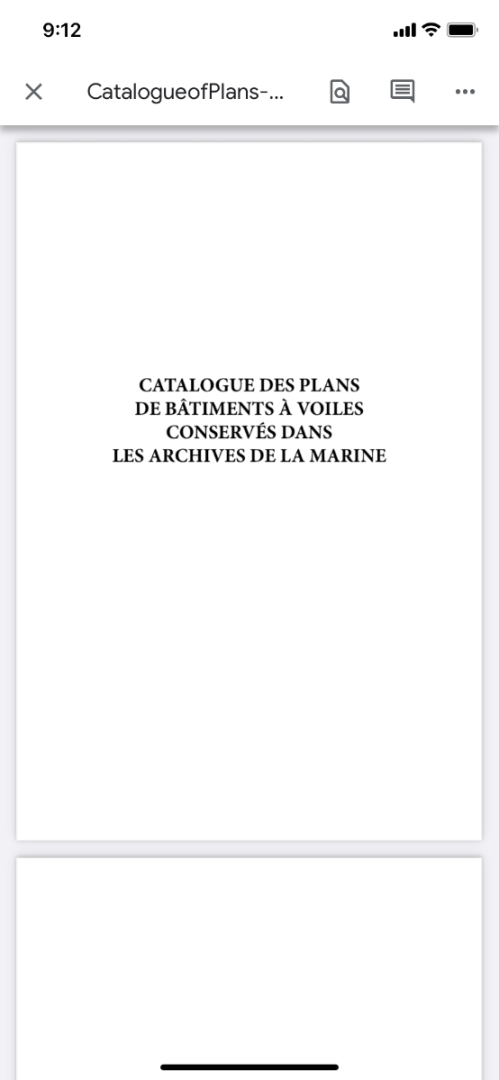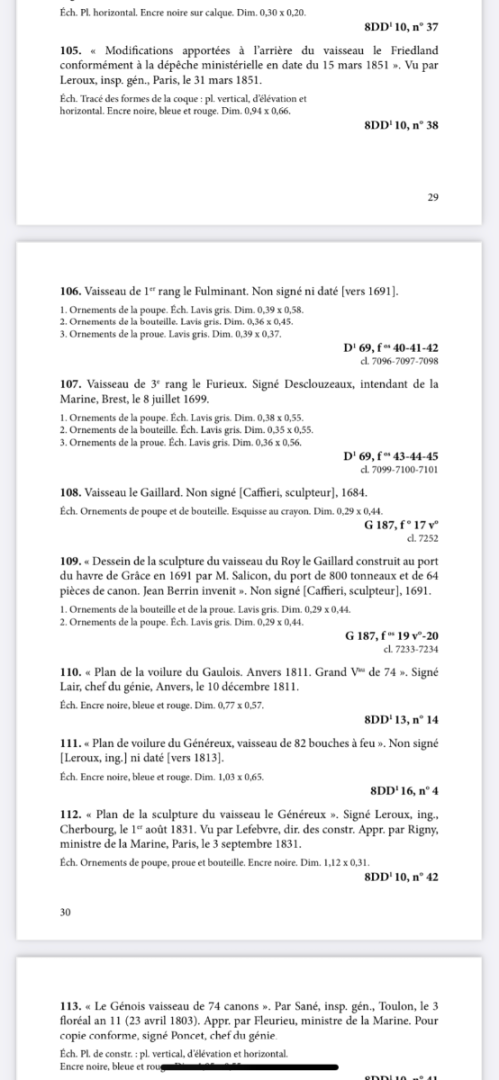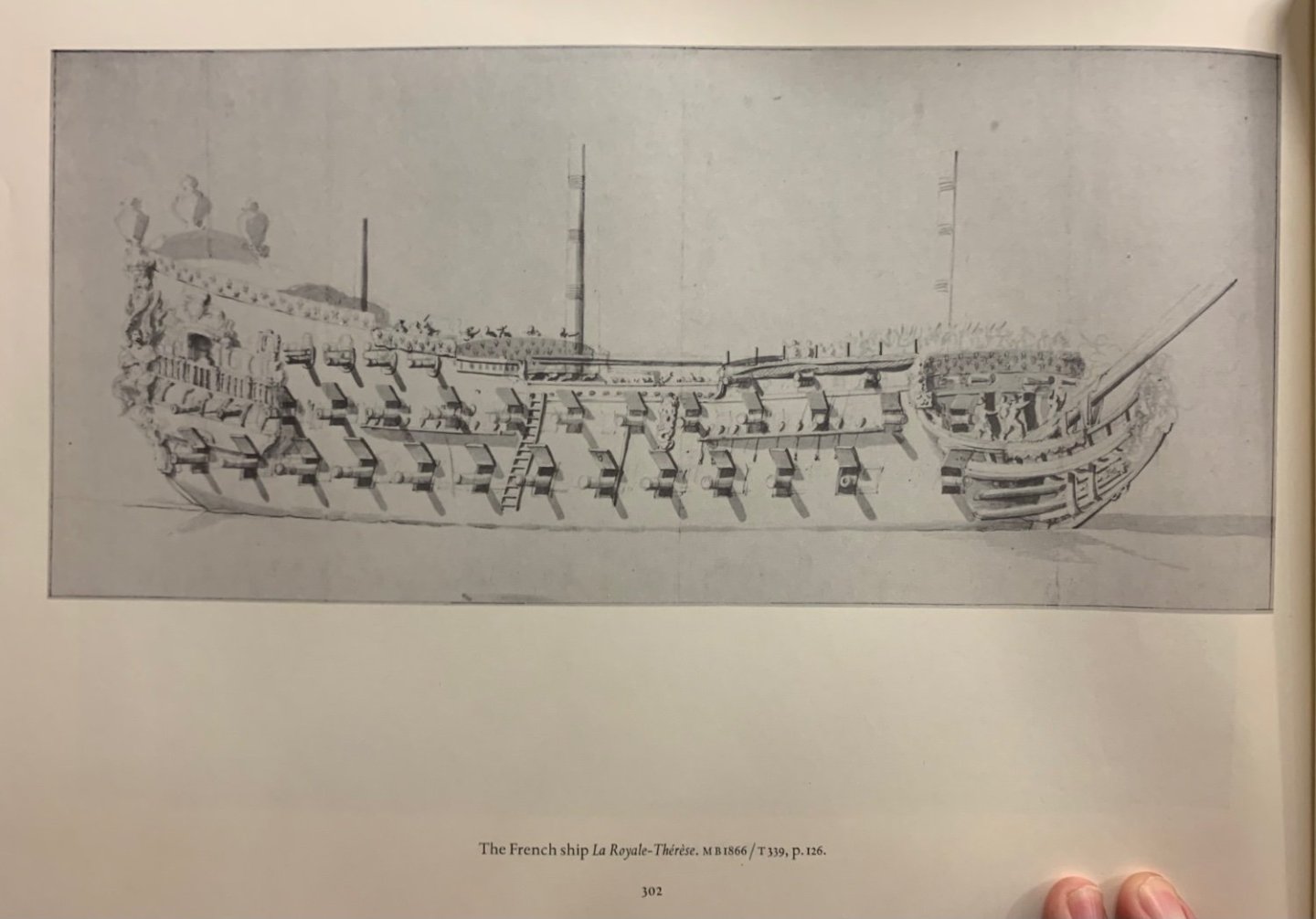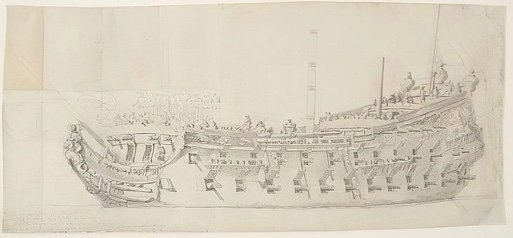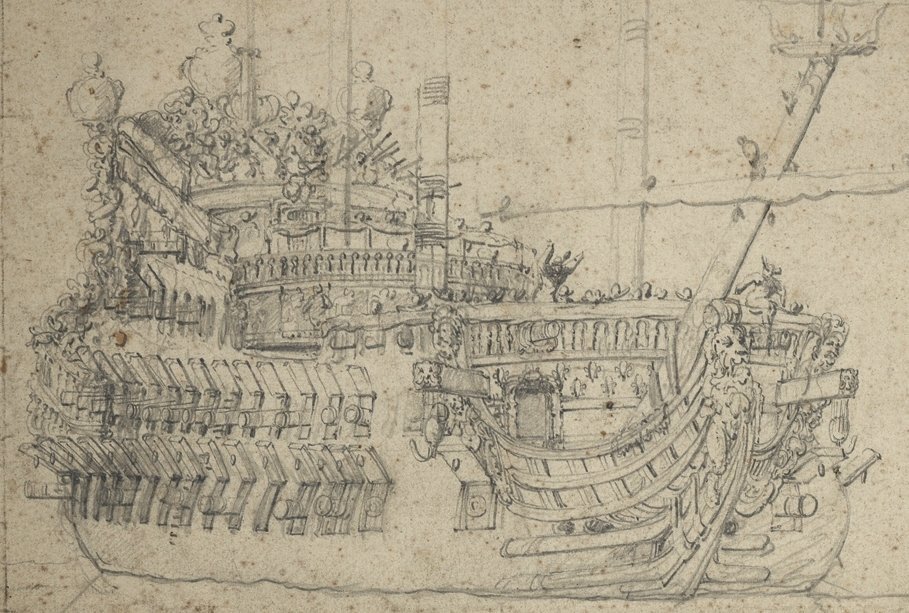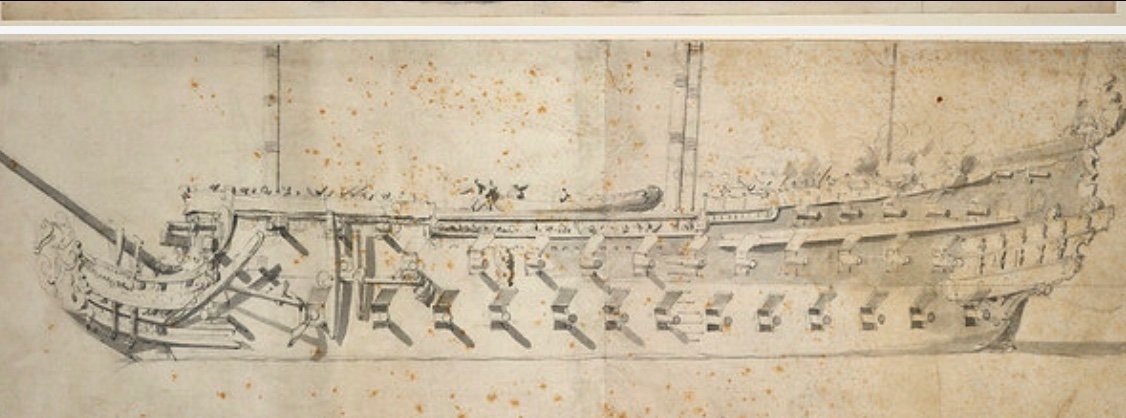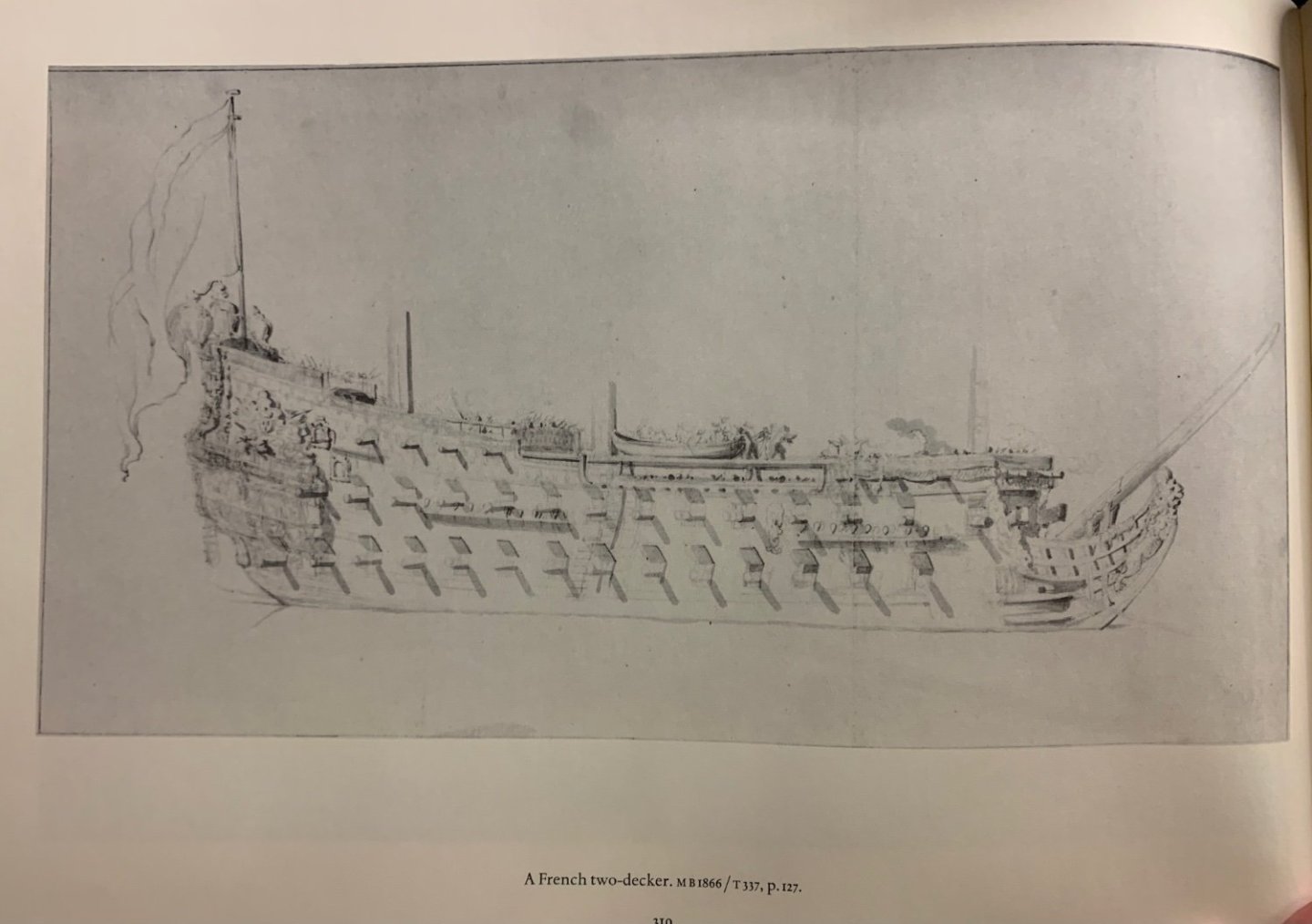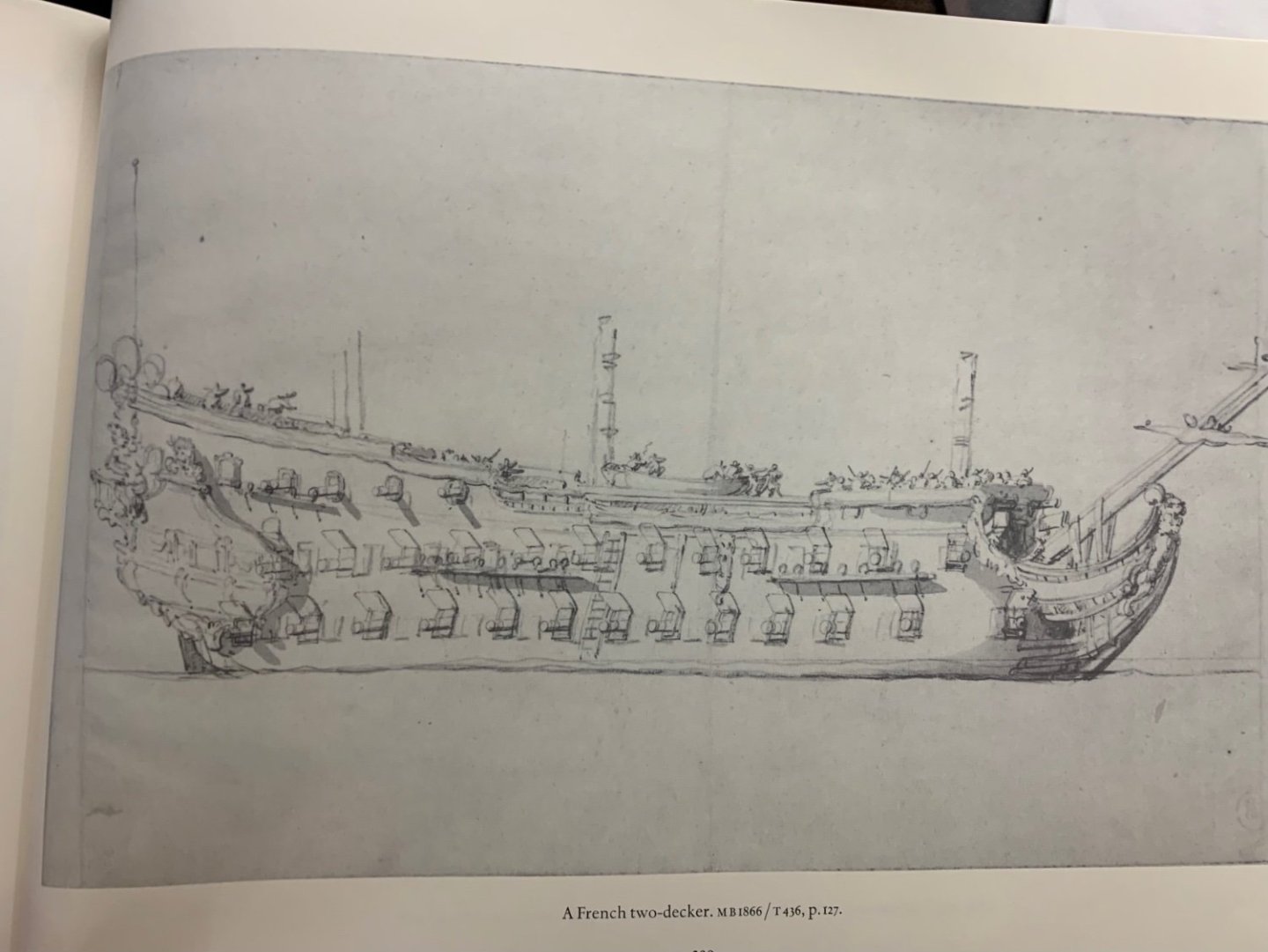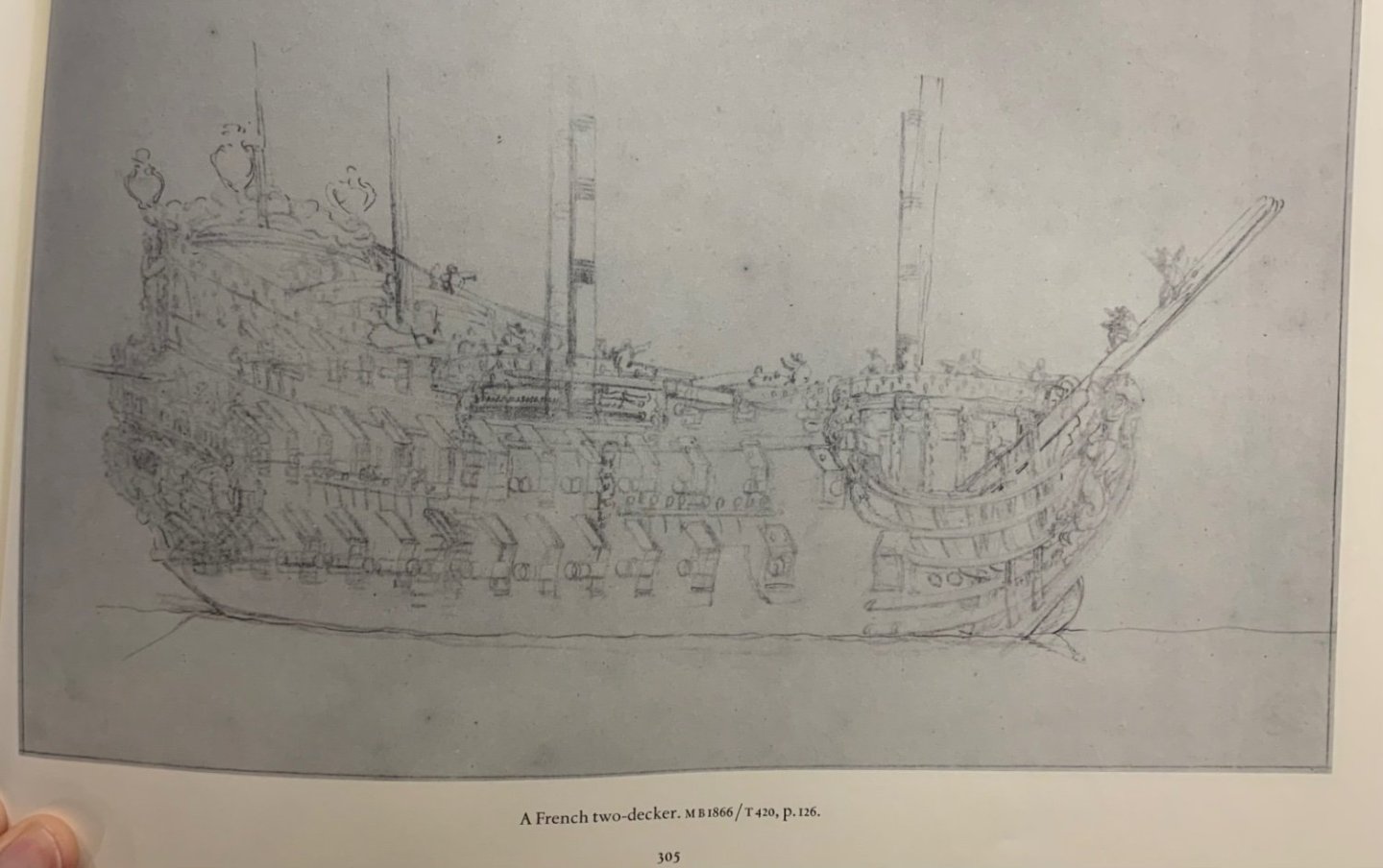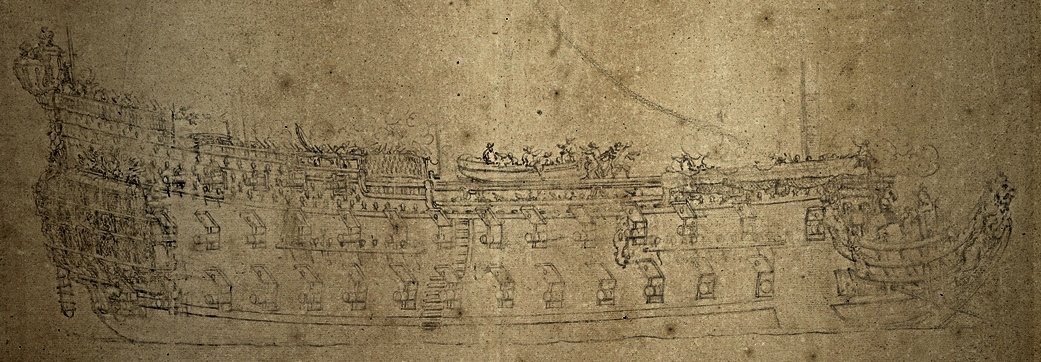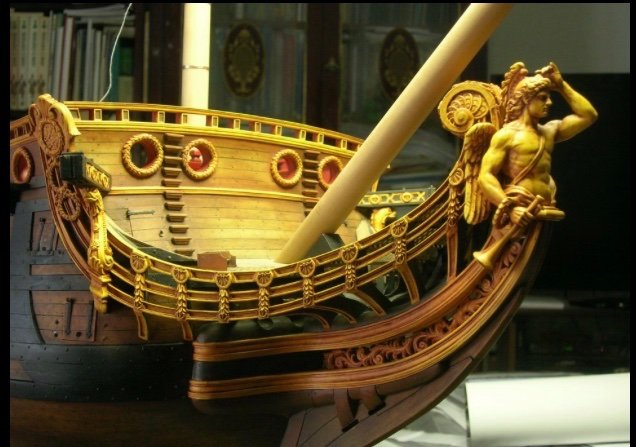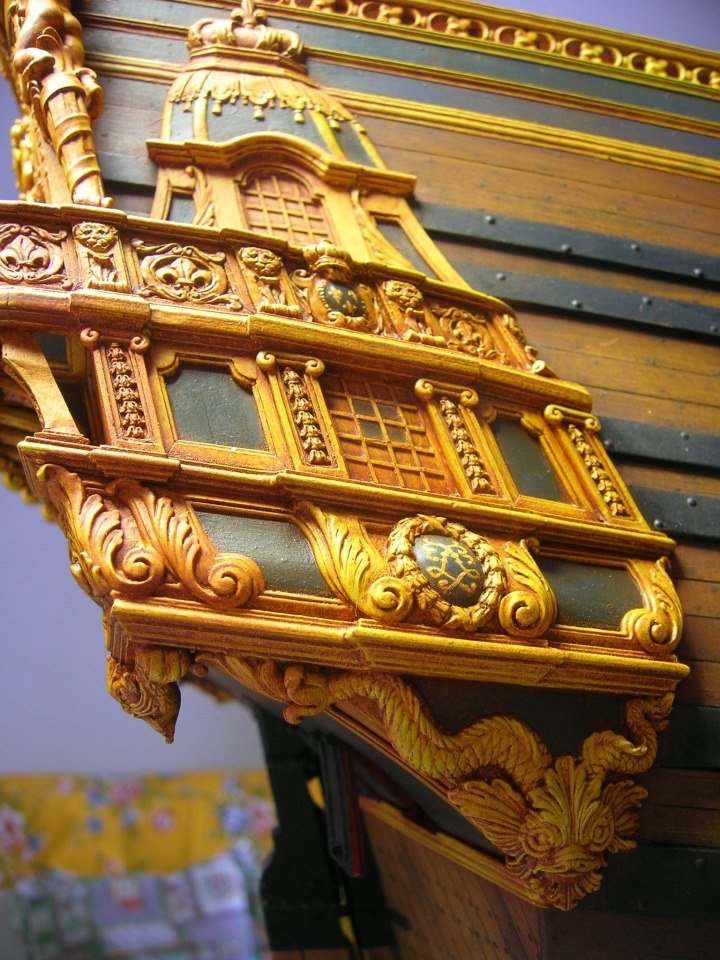-
Posts
2,946 -
Joined
-
Last visited
Content Type
Profiles
Forums
Gallery
Events
Everything posted by Hubac's Historian
-
“Delicious” dichotomy, indeed, John! That precisely expresses my own fascination with ships of this epoch. I am so glad that you are finally bringing your unique expression and perspective to light in a build-log for your ship. I am absolutely certain that many others, previously unaware, will be absolutely gob-smacked by your talents. Not a fine-scale modeler? I stridently disagree!🤩 So, one thing that has always bothered me a little is that so many vocal types on the various message boards love to complain vociferously about the kit’s numerous flaws and inaccuracies - essentially calling it a pile of junk - yet, they hold Tanneron’s model in the highest regard. Well, what you have so perfectly illustrated is the fact that the Heller kit is really a very direct copy of the Tanneron model; many of the Heller flaws originate in the Tanneron model. The thing I find so remarkable about the origination of the Prestige Series is that Heller made it possible, for a moderate sum, to bring faithful copies of world-class museum models into the average person’s home. They are flawed, yes, but aren’t we all to some degree or other? When I first spied the very pressing I am building from, in my next door neighbor’s hobby room shelves, back in 1981 (he was building the 1:200 Heller Royal Louis, at the time), I was instantly hooked, and thereafter obsessed with this magnificent puzzle of a ship. Unfortunately, Mark Hansen did not live long enough to build the ship in retirement, as he had planned to. All of this informs my view that there aren’t any “perfect” ship models. All models are constrained by the quantity and coherence of their service records and portraiture. In my opinion, an effective scale model is one that strives for fidelity to the period, while stimulating debate about its various details, and INSPIRING others to see what else may be possible. John’s Soleil Royal is all that and more!
- 80 replies
-
- Soleil Royal
- Ship-of-the-line
-
(and 2 more)
Tagged with:
-
Your point about the hierarchy of ornament is well-taken and correct. If there is a place for human forms, where they are otherwise absent, it would certainly be at the figurehead. Frolich’s version of L’Ambiteaux carries a lion as it’s figurehead, while the builder below employs this human figure: I’m not sure whom this figure from Greek mythology represents, exactly, but my guess would be Apollo, as that is the character most closely associated with Louis XIV. He is carrying a victory laurel and Fame’s trumpet proclaiming his dominance and superiority to all comers. I do not think there is anything inherently wrong with an effigy of Zeus as your figurehead, even if you don’t employ and other human figures, elsewhere in the decor.
-
Although, one idea that occurs to me straight away concerns the lower finishing of the quarter gallery. L’Ambiteaux employs these twist-tail dolphins for the lower finishing: It seems to me that a stylized eagle with it’s outstretched wing, extending into the stern counter, could also carry a clutch of lightning bolts in its clenched talons, below.
-
There would be nothing simple about that at all, really. You have the ornamental sets for L’Ambiteaux to use as a general style-guide, but the monograph for that ship ignores the upper bulwarks completely, and the bow and quarters for your project still need to make specific reference to the underlying allegory. I’ll be happy to follow along, though. If I happen to have any imagery that is helpful, I will be sure to post it, here.
-
I had not noticed, Ian. I will say, though, that it is our quirks that endear us to each other.
- 502 replies
-
- Quadrireme
- radio
-
(and 1 more)
Tagged with:
-
Fabulous progress, Ian. It is nice to hear your voice in the videos.
- 502 replies
-
- Quadrireme
- radio
-
(and 1 more)
Tagged with:
-
Eric - she’s really coming along and your deck work is excellent! I would say that aft is a reasonable choice for a few reasons: While it’s not generally clear to me, here, if these exhaust pipes are just aft of a mast, then a forward-facing exhaust would “cook” the mast rigging. Also, ships generally sail into the weather, so aft-facing exhaust would minimize water entry in heavy seas/rains.
-
I will look that up T_C. Thanks for the reference! Hi Jeff. What I do with my styrene, when I need to cut a straight edge, is that I make a series of shallow passes with a matte knife against a steel ruler. It is not necessary to cut all the way through. You can snap along the score line. I then true the snapped edge against a homemade sanding stick with 100 grit paper double stuck to it. Lastly, I always sand both broad surfaces to level the mushrooming that develops from the matte knife and to take away the plasticky appearance of the material; this is the key to a nice paintable surface. Oh, and another thing - I will “break” any super sharp edges, just as one would if they were making a piece of furniture. Those sharp corners don’t hold paint well, and they tend to look a little severe. A few scraping passes along an edge with a no. 11 blade does the trick. When it comes to joining two curved surfaces, such as the large figures to the tafferal, I make sure to backlight the joint so that I can see whether I actually have touched down along the joint. Mostly, it’s just a patient process that takes as long as it takes - I’ll spend a couple of hours trying to get one joint where I want it to be. Another thing I like to do, after those large figures have cured (the initial liquid plastic cement), is that I will come back with liquid, brushable CA - the Crazy Glue brand - and that will wick into and fill any remaining gaps in a joint, while ensuring a super strong bond. Much of the model is constructed in this way and it is way stronger than it really needs to be. This is my compulsiveness at play. Thank you, guys, for the likes and comments!
- 2,444 replies
-
- heller
- soleil royal
-
(and 9 more)
Tagged with:
-
My understanding is that the helm on Vasa exists behind and below the bulkhead that supports the quarter deck. There is a three slat opening, at main deck level and between the bulkhead doors (if memory serves), that would serve as the communication port to the helmsman. This is also a feature of the Batavia reconstruction.
-
Thank you very much guys! Never say never, Vic, although I’m so glad to hear your Couronne is on display!
- 2,444 replies
-
- heller
- soleil royal
-
(and 9 more)
Tagged with:
About us
Modelshipworld - Advancing Ship Modeling through Research
SSL Secured
Your security is important for us so this Website is SSL-Secured
NRG Mailing Address
Nautical Research Guild
237 South Lincoln Street
Westmont IL, 60559-1917
Model Ship World ® and the MSW logo are Registered Trademarks, and belong to the Nautical Research Guild (United States Patent and Trademark Office: No. 6,929,264 & No. 6,929,274, registered Dec. 20, 2022)
Helpful Links
About the NRG
If you enjoy building ship models that are historically accurate as well as beautiful, then The Nautical Research Guild (NRG) is just right for you.
The Guild is a non-profit educational organization whose mission is to “Advance Ship Modeling Through Research”. We provide support to our members in their efforts to raise the quality of their model ships.
The Nautical Research Guild has published our world-renowned quarterly magazine, The Nautical Research Journal, since 1955. The pages of the Journal are full of articles by accomplished ship modelers who show you how they create those exquisite details on their models, and by maritime historians who show you the correct details to build. The Journal is available in both print and digital editions. Go to the NRG web site (www.thenrg.org) to download a complimentary digital copy of the Journal. The NRG also publishes plan sets, books and compilations of back issues of the Journal and the former Ships in Scale and Model Ship Builder magazines.



